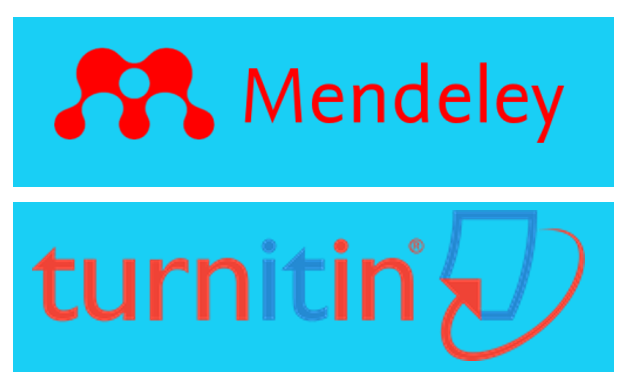Disability and Poverty Among Persons with Disabilities: The Role of the Church
DOI:
https://doi.org/10.32734/s43xjq51Keywords:
Disability, Persons with Disability, Poverty, Education, Clergy, ChurchAbstract
People with disabilities (PWDSs) are usually left out of the mainstream education and socio-economic activities. These include those with sensory, physical, and cognitive disabilities. The United Nation's Convention on the Rights of Persons with Disabilities (2006) and Kenya's Persons with Disabilities Act (2004) address issues affecting PWDSs to promote, protect, and ensure the full and equal enjoyment of human rights and fundamental freedoms, promote respect for their dignity as well as facilitate the full participation in all sectors of society. Despite these efforts, PWDSs continue to be marked by experiences of discrimination, prejudice and inequality. Religion and Theological interpretations of disability have significantly shaped the ways in which society relates to PWDSs thereby reinforcing marginalization and exclusion in the social, economic, political, educational and religious life of the society. This presentation is derived from a study on promoting awareness and participation of PWDSs in education and other community-based programs in Siaya County. This action research study investigated the relationship between poverty and Disability from the perspective of PWDSs. Data was collected using focus group discussions and interviews. The main finding was that PWDSs are living in poverty, which they attribute to being disabled. The church, perceived to have a role to play in community welfare did not seem to have a structured way of identifying or providing for PWDSs, who are incidentally members of their churches. In matters of education, it was found that there are many children with disabilities out of school that members of the clergy were aware of but seemed to have no way of engaging stakeholders to support them. Misinterpretation of religious teachings seemed to have a bearing on how PWDSs were perceived. It is recommended that the church should take active role in identifying and engaging relevant stakeholders in providing services, including education, for PWDS.
Downloads
References
Centre for Disability Rights and Education and Advocacy (2007). State of Disabled People's Rights in Kenya Report. Nairobi: CREAD.
Champbell, Alistair V. (cd) A DicÍionarv of Pastoral Care, London:SPCK, 1987.
Chudy, W., 1988, ‘Sens filozoficzny kondycji człowieka niepełnosprawnego’, in D. Kornas-Biela (ed.), Osoba niepełnosprawna i jej miejsce w społeczeństwie, pp. 105–122, Wydawnictwo KUL Lublin.
Clapton, J. & Fitzgerald, J. (1997). "The History of Disability: A History of Otherness" in New Renaissance Magazine 7.1 (1997).
Eiesland, N. (2009). Sacramental bodies. Journal of Religion, Disability and Health, 13 (3/4).
Ecumenical Disability Advocates Network, (2006). "A Church of All and for All" in Interpreting Disability: A Church for All and for All. Geneva: WCC.
Eiesland, N.L. (1994). The Disabled God: Toward a Liberatory Theology of Disability. Nashville: Abingdon Press.
Encyclopaedia Judaica, Vol 4 (1972). Jerusalem: Keter Publishing House.
Gill, C. (1987). "A New Social Perspective on Disability and Its Implication for Rehabilitation" in F.S. Cromwell (ed.), Social and Cultural Implications in Treatment Planning in Occupational Therapy. New York: Haworth Press, pp. 49-55.
Government of Kenya (2019). Economic Survey. Nairobi: Government of Kenya.
Government of Kenya (2003). The Kenya Demographic Health Survey, 2003. Nairobi: Government of Kenya.
Govig, S. (1982). "Disabled Persons in the Congregation: Towards a Theology of Encouragement" in African Theological Journal 11 (1982): 85-102.
Grant, C. (1997). "Reinterpreting the Healing Narratives" in Nancy Eiesland and Don Saliers (eds.), Human Disability and the Service of God: Reassessing Religious Practice. Nashville: Abingdon.
Goldenson, Robert M. (Ed) and Rehabilitation Handbook. New York: McGraw-I [ill Book Company, Inc., 1978.
Hanks, Geoffrey, 60 Great Founders. Ross-Shire: Christian Focus Publications Ltd., 1995.
Harrison, Ted Disabilitv: Rights and Wrongs. Oxford: Lion Publishing, 1995.
Hull, J. (2000). Blindness and the Face of God. Unpublished manuscript.
Hull, J. M. (2003). The broken body in a broken world: A contribution to a Christian doctrine of the person from a disabled point of view. Journal of Religion, Disability & Health, 7 (4).
Kabue, S. (1993). "Persons with Handicaps in Church and Society." Address to Church Leaders at Limuru Conference and Training Centre, 26th March 1993. NCCK, Nairobi.
Kabue, S. (2006). Disability and the healing ministry of the church. International Review of Mission, 95 (376/377).
Kern, Walter. Pastoral Ministry with Disabled Persons. New York: Alba House-Society of St. Paul. 1985.
Lipiec, D., 2019, ‘People with disabilities as a gift and a challenge for the church’, HTS Teologiese Studies/ Theological Studies 75(4), a5449. https://doi.org/10. 4102/hts.v75i4.5449
Masakhwe, W. (1999). "The Church and the Handicapped" in AMREF CBR Bulletin (Jan-March, (1999): 3-4.
Melcher, Sarah J. (1998). "Visualizing the Perfect Cult" in Nancy Eiesland and Don Saliers (eds.), Human Disability and the Service of God: Reassessing Religious Practice. Nashville: Abingdon Press.
National Council of Churches of Kenya (1993). Programme for Persons with Handicaps. Nairobi: NCCK.
National Council of Churches of Kenya (1996). Desk for Persons with Handicaps. Nairobi: NCCK.
Njoroge, N. (2001). "Not an Option: Ministry with and for Persons with Disabilities" in Ministerial Formation 92 (2001): 5-8.
Otrębski, W., 2009, ‘Niepełnosprawny. Aspekt psychologiczny’, in W. Granat (ed.), Encyklopedia Katolicka , vol. 13 col. 1156, Wydawnictwo KUL, Lublin.
Owen, M. (1991). "What's so important about the Wrapping on our Souls" in Boylan, E. (ed.), Women and Disability. London: Zed Books.
Pierson, J. (2010). Inclusion: Easy and natural. Journal of Religion, Disability & Health, 14 (2).
Reinders, H. (2008). Receiving the gift of friendship: Profound disability, theological anthropology, and ethics. Grand Rapids, MI: Wm. B. Eerdmans Publishing Co.
Republic of Kenya (2004). "Persons with Disabilities Act," Kenya Gazette Supplement, No. 48, Government of Kenya.
Satterlee, C. (2010). ―The eye made blind by sin‖: The language of disability in worship. Liturgy, 25 (2).
Swain, J., S. French, and C. Cameron (2003). Controversial Issues in a Disabling Society. Buckingham: OU Press.
The Jewish Encyclopaedia, Vol. 3 (1920). New York: Fink and Wagnalls.
The Talmud of Jerusalem (1956). New York: Philosophical Library.
United Nations (1994). The Standard Rules on the Equalization of Opportunities for Persons with Disabilities. New York: UN.
United Nations (1983). World Programme for Action Concerning Disabled Persons. New York: UN.
United States Catholic Bishop's Conference (1978). The Handicapped Experience Christ: A Resource for Ministry to and with the Handicapped and their Families. Washington DC: Department of Education.
Webb-Mitchell, B. (2010). Beyond accessibility: Toward full inclusion of people with disabilities in faith communities. i: Church Publishing Inc.
Webb-Mitchell, B. (2010). Educating toward full inclusion in the body of Christ: People with disabilities being full members of the church. Journal of Religion, Disability & Health, 14 (3).
Wilkes, H. (1980). Creating a Caring Congregation: Guidelines for Ministry with the Handicapped. Nashville: Abingdon.
World Council of Churches (1982). "Humanity and Wholeness of Persons with Disabilities." Report on Consultation held at Sao Paulo, 23-30 November, 1981. Geneva: WCC.
Yong, A. (2010). Many tongues, many senses: Pentecost, the body politic, and the redemption of disability. Pneuma: The Journal of the Society for Pentecostal Studies, 31 (2)
Downloads
Published
Issue
Section
License
Copyright (c) 2024 Gregory Jumah Nyongesa (Author)

This work is licensed under a Creative Commons Attribution 4.0 International License.
- Authors agree to publish their work under the Creative Commons Attribution 4.0 International (CC BY 4.0) license.
- Authors retain copyright to their work and may reuse or distribute it.
- HUMANIOLA reserves the right to request revisions and make final publication decisions.
- Authors are responsible for ensuring that their work does not infringe upon third-party copyrights.
- Archiving in digital repositories may be done for long-term access and preservation.






